Module 3 - Benjamin-Mills
Module 3 - Benjamin-Mills
Module 3 - Benjamin-Mills
You also want an ePaper? Increase the reach of your titles
YUMPU automatically turns print PDFs into web optimized ePapers that Google loves.
TAKING NYLON APART<br />
DP2.2<br />
16 This will be a rough value for the melting point because you were heating<br />
quite quickly. To determine an accurate melting point, allow the apparatus<br />
to cool down to about 10 °C below the value you have just recorded. Prepare<br />
another sample while this is happening. Then repeat the process with the<br />
fresh sample and a slower rate of heating.<br />
17 Record the accurately determined melting point of your hexanedioic acid.<br />
Part 4: Detecting the 1,6-diaminohexane produced<br />
The diamine is still in solution in the filtrate obtained in Part 1 because it has<br />
formed a soluble salt by reacting with the sulphuric acid.<br />
18 Take 5 cm 3 of the filtrate and carefully pour it into 20 cm 3 of saturated<br />
sodium hydrogencarbonate solution in a 250 cm 3 beaker. (CARE Do not add<br />
the filtrate all in one go or the mixture will fizz dangerously.)<br />
Use pH paper to make sure that the mixture is no longer acidic. If necessary<br />
add some more sodium hydrogencarbonate solution to achieve this.<br />
19 Then add 5 cm 3 of 2 mol dm –3 sodium hydroxide solution to make the<br />
solution alkaline. (CARE Sodium hydroxide solution is corrosive.)<br />
Cautiously swirl the contents of the beaker and note the smell of the<br />
solution which contains 1,6-diaminohexane. (For comparison, the trivial<br />
names of 1,4-diaminobutane and 1,5-diaminopentane are putrescine and<br />
cadavarine respectively, both of which are associated with the putrefaction of<br />
proteins in flesh.)<br />
QUESTIONS<br />
a What property of hexanedioic acid is made use of in the<br />
recrystallisation process?<br />
b Melting points are often used to identify compounds. They are also<br />
a good indication of the purity of a compound. Was your sample of<br />
hexanedioic acid pure? Explain your answer.<br />
c Write an equation for the hydrolysis of a short section of nylon-6,6<br />
to produce hexanedioic acid and 1,6-diaminohexane.<br />
„ Salters Advanced Chemistry 2000 – see Copyright restrictions<br />
165



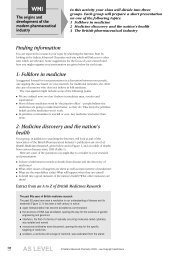

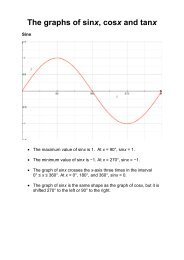


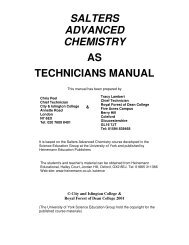



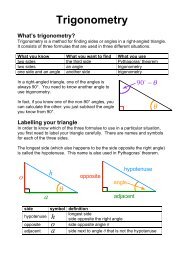

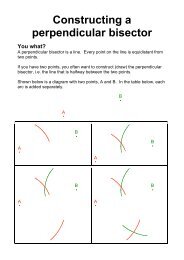


![ISI Web of Knowledge [v.4.10] - All Databases Results - Benjamin-Mills](https://img.yumpu.com/39253071/1/184x260/isi-web-of-knowledge-v410-all-databases-results-benjamin-mills.jpg?quality=85)